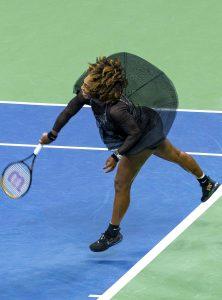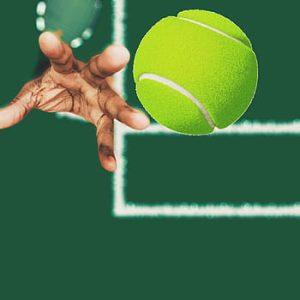We may earn money or products from the companies mentioned in this post.
A Brief History of Tennis Nets

Tennis, a sport that has captivated audiences for centuries, traces its origins back to the 12th century in France The game was initially played using bare hands, and players would hit the ball against walls or over makeshift nets As the sport gained popularity, the need for standardized equipment arose
Over time, tennis nets evolved from simple ropes tied between posts to more sophisticated structures In the late 19th century, net height regulations were introduced to ensure fair play and consistent gameplay across different venues and tournaments
Evolution of Net Height Regulations
The first set of standardized net height regulations was established in 1875 by the All England Croquet Club, which later became known as the Wimbledon Championship According to these rules, the net’s height should be 3 feet 6 inches (107 meters) at the posts and 3 feet (0914 meters) at the center
In modern times, these measurements have remained largely unchanged for professional tennis competitions However, variations exist for recreational play and junior tournaments where lower net heights are often used to accommodate younger players
The Importance of Correct Net Height in Tennis

Impact on Gameplay and Strategy
The correct net height in tennis plays a crucial role in shaping gameplay and strategy It affects how players approach shots and influences their decision-making during matches
A higher net encourages players to use more top spin on their shots, allowing them to clear the net with greater ease while keeping the ball within bounds This style of play can lead to longer rallies and a more tactical game where players try to outmaneuver each other using angles and placement rather than relying solely on power
Conversely, a lower net height requires players to rely on flatter shots and precise timing, as they have less margin for error when clearing the net This style of play often favors aggressive baseliners who can hit powerful groundstrokes and go for winners
Ensuring Fair Competition
Having a standardized net height ensures fair competition across different venues and tournaments It eliminates any potential advantage or disadvantage that players may have due to variations in net height
By adhering to consistent net height regulations, tennis associations and governing bodies ensure that every player has an equal opportunity to showcase their skills on a level playing field This enhances the integrity of the sport and promotes fair competition
Standard Tennis Net Height Specifications

When it comes to tennis, there are specific regulations in place to ensure fair play and consistent standards across the sport The International Tennis Federation (ITF) is responsible for setting these official rules, including guidelines for the height of the net Let’s dive into the details!
Singles and Doubles Matches
In both singles and doubles matches, the net height remains the same According to ITF regulations, the standard height of a tennis net is 3 feet 6 inches (107 meters) at the center point This means that when properly set up, players will need to hit their shots over this barrier during gameplay
Junior vs Senior Players – Any Differences?
The ITF recognizes that tennis is played by people of all ages and skill levels While there may be variations in court size for junior players, the net height remains constant across all age divisions So whether you’re a seasoned senior player or a talented young prodigy, you’ll be facing the same challenge when it comes to clearing that net
Measurements at Various Points on the Court
The center point of a tennis court is where most rallies take place, so it’s crucial to ensure that proper net height is maintained here As mentioned earlier, this central portion should measure 3 feet 6 inches (107 meters), providing an equitable challenge for both players
In addition to the center point height, it’s important to consider the side-post heights as well These are usually slightly higher than the center point due to natural sagging caused by tensioning of the net However, they should not exceed a maximum height of 3 feet 6 inches (107 meters) either
Adjusting Tennis Net Height for Different Court Types and Levels of Play

Grass, clay, and hard courts – do they require different heights?
When it comes to tennis net height, the type of court you’re playing on can indeed make a difference Grass, clay, and hard courts each have their own unique characteristics that impact net height requirements
1 Characteristics of each court type
Grass courts offer a fast and low-bouncing surface due to their natural turf Clay courts, on the other hand, provide a slower game with higher bounces due to their soft and loose composition Hard courts fall in between, offering medium-paced play with predictable bounces
2 Impact on net height requirements
The different characteristics of grass, clay, and hard courts necessitate adjustments in net height to ensure fair play To accommodate the lower bounce on grass courts, the net should be set slightly higher than on clay or hard surfaces This helps prevent the ball from hitting the tape too often and disrupting gameplay
Adaptive tennis – adjustments for wheelchair and other adaptive play situations
Tennis is a sport that welcomes players of all abilities through its adaptive formats such as wheelchair tennis and other inclusive variations
1 Wheelchair tennis rules and regulations
In wheelchair tennis, players use specially designed wheelchairs that allow them to maneuver effectively on the court The rules regarding net height remain consistent with those used in traditional tennis matches
2 Other adaptive formats
Besides wheelchair tennis, there are various adaptive formats tailored for players with different needs or disabilities These formats may involve modifications in court dimensions or equipment but generally adhere to the same net height standards as traditional tennis
Tips for Measuring and Maintaining Proper Tennis Net Height

When it comes to playing tennis, having the net set at the correct height is crucial for fair and enjoyable gameplay To ensure accurate net height measurement, you’ll need a few essential tools in your arsenal
Tools required to measure accurate net height
-
Measuring tapes:
These handy tools will help you determine if the net is set at the right height according to regulations -
Net gauges or tension devices:
These devices provide precise measurements of the net’s tension, ensuring it meets the required standards
Maintaining proper tension in the net cable
To maintain proper tension in your tennis net’s cable, regular inspections are key Keep an eye out for any signs of wear and tear that may affect its performance If you notice frayed or damaged cables, it’s best to replace them promptly to avoid any disruptions during play
-
Regular inspection of equipment:
Conduct routine checks on all components of your tennis court setup, including the net and its supporting structure This will help identify any issues early on -
Replacement of worn-out cables or nets:
When you spot worn-out cables or nets that no longer hold proper tension, don’t hesitate to replace them This ensures consistent gameplay quality and reduces potential safety risks
Troubleshooting common issues
Inevitably, certain issues may arise with tennis nets that affect their height and overall performance Knowing how to troubleshoot these problems can save time and frustration on the court
-
Sagging or uneven nets:
If you notice your net sagging or appearing uneven, adjust the tension carefully using the appropriate tools By making precise adjustments, you can restore the net to its correct height and ensure a level playing field for all players -
Side-posts affecting proper height:
Damaged side-posts can throw off the net’s height and overall stability Inspect these posts regularly and repair any damages promptly to maintain consistent net height
By following these tips for measuring and maintaining proper tennis net height, you’ll contribute to a fair and enjoyable game for all players Remember to prioritize regular inspections, prompt replacements when necessary, and troubleshooting common issues to keep your tennis court in top shape
Useful Links

What Height Is A Tennis Net
Pickleball Net Height vs. Tennis Net Height
Tennis Net Dimensions & Drawings
How Tall is a Tennis Net? – Penalty File
What is the height of a tennis net in the middle … – Tennisario
Tennis Net Height Measuring Stick [Wooden] – Vermont Sports
Tennis Net Height – A Complete Guide to Understand …
Pickleball Net Height Vs Tennis Net
Official Tennis Court Dimensions | Tennisplanet.co.uk
Pickleball Net Height vs. Tennis Net Height
Tennis Nets: #1 For High School’s & Colleges
Are All Tennis Nets The Same Size? – The Racket Life
Pickleball Net Height vs. Tennis Net Height – A Helpful …
Douglas® PLTN-28 Platform Tennis Court Net, 3ft high x 23ft
Tennis Nets & Posts – Sports
Douglas Tennis Nets
Used / Tennis Nets / Tennis Court Equipment
Best Competition Tennis Net






